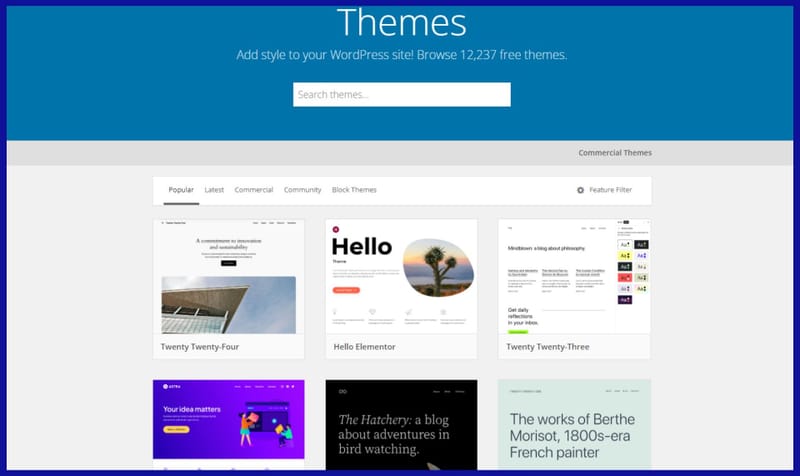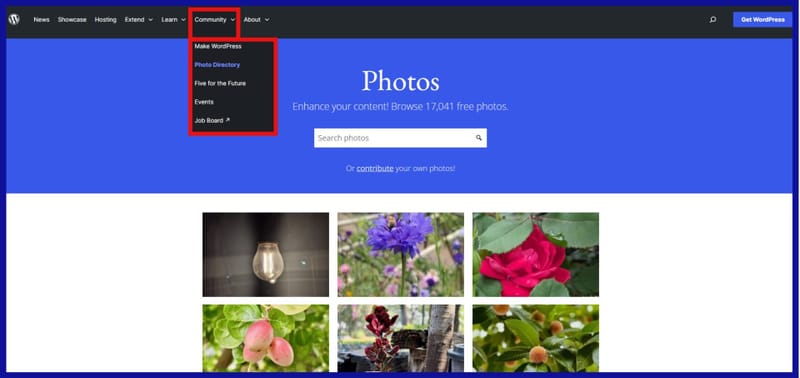
Drupal and WordPress are two of the most prominent contenders in content management systems (CMS).
Both platforms offer robust tools and features to help users create and manage websites efficiently. The significance of choosing the suitable CMS for your website cannot be overstated; it directly impacts factors such as usability, customization options, security, and scalability.
Understanding the differences between them is crucial for making an informed decision that aligns with your website's goals and requirements.
In this comprehensive comparison, we will delve into critical factors such as ease of use, flexibility, community support, security, performance, cost, and target audience to help you determine which CMS is the best fit for your project.
By exploring these aspects, you'll gain valuable insights into how they compare, empowering you to make the right choice for your website's success.
History and Background
WordPress and Drupal have distinct histories that have shaped their evolution into leading content management systems (CMS) today.
Drupal

Drupal, founded in 2001 by Dries Buytaert, stands out for its community-driven approach, extensibility, and security.
It started as a personal experiment, a message board for friends, and evolved into an open-source CMS with the release of Drupal 1.0 in 2001.
Notable milestones include the introduction of a modular architecture in Drupal 4.0 (2002) and usability and performance improvements in Drupal 7 (2011).
Its emphasis on collaboration, extensibility, and security makes it a top choice for large-scale, complex websites.
WordPress

WordPress, founded in 2003 by Matt Mullenweg and Mike Little, has come a long way from its origins as a forked blogging software.
It gained popularity for its user-friendly interface and extensive plugin ecosystem.
Key milestones include the release of WordPress 1.0 in 2004, the introduction of themes and plugins in 2005, and the game-changing Gutenberg block editor in WordPress 5.0 (2018).
Its evolution from a blogging platform to a versatile CMS reflects its commitment to simplicity, ease of use, and adaptability for various website types.
WordPress and Drupal's backgrounds, rooted in the personal projects of their founders, have shaped their current features and capabilities.
Drupal's origins as a community-driven project have fostered a focus on flexibility, scalability, and security, ideal for large-scale enterprise websites.
In contrast, WordPress's roots as a blogging platform have influenced its user-friendly interface, extensive plugin ecosystem, and adaptability for various website types, making it a popular choice for bloggers, small businesses, and e-commerce ventures.
WordPress Vs. Drupal: Ease of Use
They both present distinct user experiences tailored to different needs and preferences when it comes to ease of use.
User Interfaces
WordPress is renowned for its intuitive and user-friendly interface, designed to simplify website management tasks for beginners and experienced users alike.
Its dashboard features a clean layout with menu options organized logically, making it easy to navigate and find the desired settings or features.
In contrast, Drupal's interface is more complex and may appear daunting to beginners due to its extensive menu options and configuration settings.
However, Drupal's interface offers greater customization and control, allowing users to tailor their workspace to their specific needs once they become familiar with the platform.
Learning Curve and Customization
WordPress boasts a shallow learning curve, with a wealth of documentation, tutorials, and online resources available to guide users through the setup and customization process.
Its extensive library of themes and plugins enables users to create unique and highly customized websites without the need for advanced technical skills.
On the other hand, Drupal has a steeper learning curve, requiring users to invest more time in understanding its terminology, concepts, and workflow.
However, Drupal's robust customization options and flexibility make it a preferred choice for developers and advanced users seeking complete control over their website's design and functionality.
User-Friendliness for Different Users
For beginners and users with limited technical expertise, WordPress is often the preferred choice due to its simplicity.
Its intuitive interface, extensive documentation, and vibrant community support make it accessible to users of all skill levels, from bloggers to small business owners.
Conversely, Drupal is better suited for users with a background in web development or those seeking advanced customization options and scalability.
While Drupal may initially present challenges for beginners, its flexibility and extensibility make it a powerful tool for creating complex, enterprise-level websites.
Basically, WordPress excels in user-friendliness, making it an ideal choice for beginners and users seeking simplicity.
In contrast, Drupal offers greater customization and flexibility but comes with a steeper learning curve, making it better suited for advanced users and developers looking to build highly customized websites.
Flexibility and Customization
Both of them offer a high degree of flexibility and customization options, but they differ in their approaches and capabilities.
Extensibility and Flexibility
Drupal is renowned for its extensibility and flexibility, allowing users to create highly customized websites tailored to their specific needs.
With its modular architecture, Drupal enables developers to extend its core functionality by creating custom modules or leveraging existing ones from the Drupal community.
This level of flexibility makes Drupal well-suited for complex projects requiring advanced functionality and custom workflows.
WordPress also offers a considerable level of flexibility, thanks to its extensive library of themes and plugins.
Themes allow users to easily change the appearance and layout of their websites, while plugins add additional functionality and features, such as e-commerce, SEO, and social media integration.
While WordPress may not offer the same level of customization and control as Drupal out of the box, its vast ecosystem of themes and plugins provides users with ample options to create unique and highly functional websites.
Themes, Plugins, and Modules

WordPress boasts a vast collection of themes and plugins, with thousands of options available for users to choose from.
Whether you're looking for a sleek and modern design or specific functionality like contact forms or galleries, there's likely a theme or plugin that meets your needs.
Additionally, WordPress themes and plugins are relatively easy to install and configure, making them accessible to users of all skill levels.
Drupal offers a similar array of themes and modules, albeit with a narrower selection compared to WordPress.
However, Drupal's modules provide more advanced functionality and customization options, catering to the needs of developers and advanced users.
While Drupal's learning curve may be steeper initially, its robust customization options and scalability make it a preferred choice for large-scale, enterprise-level projects.
Control and Scalability
Both of them offer powerful tools for managing websites of all sizes in terms of control and scalability.
However, Drupal's modular architecture and emphasis on structured content make it particularly well-suited for complex projects with extensive content types, taxonomies, and workflows.
Use Drupal to have greater control over every aspect of your website, from content organization to user permissions, making it a reliable choice for enterprise-level websites and applications.
Community and Support
Both benefit from vibrant and active communities, which offer valuable support resources and foster collaboration among users and developers.
Size and Activity
WordPress boasts one of the largest and most active communities in the CMS world, with millions of users, developers, and contributors worldwide.
The WordPress community is known for its inclusivity, diversity, and enthusiasm for sharing knowledge and expertise.
With numerous WordCamps, meetups, and online forums, WordPress users have ample opportunities to connect with like-minded individuals, exchange ideas, and stay updated on the latest developments in the WordPress world.
While Drupal's community may be smaller than WordPress's, it is equally passionate and dedicated to supporting the platform's growth and development.
The Drupal community, a testament to dedication and passion, is known for its technical expertise. It strongly emphasizes collaboration, innovation, and contribution to the Drupal project.
From DrupalCons to local meetups and online forums like Drupal.org, the community provides a supportive environment for users to seek help, share insights, and contribute to the platform's ongoing improvement.
Quality and Availability of Support Resources
These two offer extensive support resources, including forums, documentation, tutorials, and official websites.
WordPress's vast array of themes, plugins, and user-friendly interface is supported by a wealth of online resources, including the WordPress Codex, support forums, and community-driven blogs and tutorials.
Similarly, Drupal provides comprehensive documentation, tutorials, and forums to help users navigate the platform's more complex features and functionalities.
Additionally, Drupal.org serves as a central hub for community-driven development, offering developers and contributors access to code repositories, issue trackers, and collaboration tools.
Importance of Community and Support

Community and support are not just integral but the backbone of troubleshooting, development, and overall success.
Whether you're a beginner seeking guidance on setting up your website or an experienced developer troubleshooting a complex issue, having access to a supportive community can make a significant difference in your experience with the platform.
The collaborative nature of these communities fosters knowledge sharing, innovation, and continuous improvement, ensuring that they remain accessible, reliable, and user-friendly platforms for users of all skill levels.
Security
Security is a critical consideration for any website, and both of them offer robust measures to protect against vulnerabilities and threats.
Security Features and Vulnerabilities
Drupal is known for its strong emphasis on security, with a dedicated security team actively monitoring and addressing vulnerabilities in the core software and contributed modules.
Drupal's architecture, which separates content from presentation and functionality, enhances security by reducing the attack surface and minimizing the risk of exploits.
While Drupal's focus on security makes it less prone to common vulnerabilities, such as SQL injection and cross-site scripting (XSS), its more complex setup may require additional expertise to maintain and secure effectively.
WordPress also prioritizes security and releases regular updates to address vulnerabilities and improve the platform's overall security posture.
However, due to its widespread popularity and extensive plugins, WordPress sites may be more susceptible to attacks targeting known vulnerabilities in themes and plugins.
To mitigate these risks, WordPress encourages users to keep their sites updated with the latest security patches and to use reputable themes and plugins from trusted sources.
Built-in Security Measures and Updates
They both offer built-in security measures to protect against common threats, such as brute-force attacks, malware, and unauthorized access.
Drupal includes features like access controls, input validation, and secure defaults to mitigate security risks out of the box.
WordPress provides similar security measures, including user roles and permissions, password strength enforcement, and file integrity monitoring.
Regular updates are essential for maintaining the security of these websites.
Both platforms release security updates and patches promptly in response to emerging threats and vulnerabilities. Users are encouraged to apply these updates promptly to ensure their websites remain protected against potential security risks.
Best Practices for Securing Websites
Securing websites involves implementing best practices to mitigate risks and enhance resilience against potential threats. These best practices include:
- Keeping the core software, themes, and plugins/modules up to date with the latest security patches.
- Using strong, unique passwords and implementing two-factor authentication (2FA) for added security.
- Regularly backing up website data to facilitate recovery in the event of a security incident.
- Implementing web application firewalls (WAFs) and security plugins to monitor and block malicious activity.
- Conducting regular security audits and vulnerability scans to identify and address potential weaknesses proactively.
By following these best practices and staying vigilant against emerging threats, website owners can enhance the security of their Drupal and WordPress sites and minimize the risk of security breaches or compromises.




